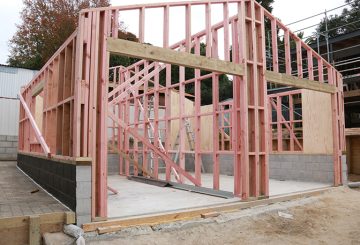Số người trưởng thành ở Rotorua chết sớm do chất lượng không khí kém đã giảm một nửa trong 13 năm, tiết kiệm hơn 100 triệu đô la chi phí xã hội, theo các ủy viên hội đồng Rotorua Lakes.
Bất chấp tiến bộ này, các quan chức cảnh báo rằng các phương pháp mới để đo lường ô nhiễm không khí có thể ảnh hưởng đến Rotorua, một thành phố đang làm việc để nâng cao chất lượng không khí. Ủy viên hội đồng Lyall Thurston nhấn mạnh rằng Rotorua có chất lượng không khí tồi tệ nhất của Đảo Bắc, chủ yếu là do các lò đốt gỗ. Các hành động đã được thực hiện để khuyến khích các phương pháp sưởi ấm sạch hơn, loại bỏ một số đầu đốt và sử dụng công nghệ để xác định những người không tuân theo các quy tắc.
Tiến sĩ Gregory Evans từ Toi Te Ora Public Health tuyên bố rằng ô nhiễm không khí ảnh hưởng đến tất cả, nhưng một số người có nguy cơ cao hơn. Tiếp xúc ngắn hạn có thể làm trầm trọng thêm các tình trạng như hen suyễn, trong khi tiếp xúc lâu dài có thể gây ra các bệnh tim mạch. Một nghiên cứu từ năm 2022 cho thấy ô nhiễm không khí do con người gây ra vào năm 2016 đã dẫn đến 3300 ca tử vong ở người trưởng thành sớm ở New Zealand. Ở Rotorua, những ca tử vong này đã giảm từ 40 trong năm 2009 xuống còn 19 vào năm 2022.
Marion Henton từ hội đồng khu vực giải thích sự chuyển đổi từ cách tiếp cận tự nguyện trong năm 2008 sang cách tiếp cận chặt chẽ hơn hiện nay, tập trung vào các nguồn ô nhiễm cao. Năm nay, hình phạt lần đầu tiên được đưa ra đối với những người sử dụng đầu đốt không tuân thủ các quy định.
Tuy nhiên, Henton nhấn mạnh những thách thức tiềm ẩn. Các tiêu chuẩn chất lượng không khí quốc gia đang được xem xét. Những thay đổi được đề xuất có thể chuyển trọng tâm từ các hạt PM10 sang PM2.5. Do khói gỗ chủ yếu là PM2.5, sự thay đổi này sẽ ảnh hưởng lớn đến các thành phố như Rotorua.
Cô cũng đề cập đến những nỗ lực của hội đồng để giúp chủ nhà chuyển sang đầu đốt tuân thủ, với nhiều thiết bị thay thế miễn phí. Hội đồng có kế hoạch điều chỉnh các mục tiêu của mình sau khi các tiêu chuẩn mới được hoàn thiện.





























































